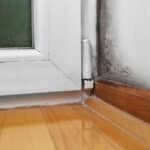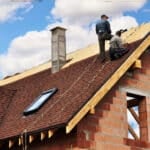Flooding can be a devastating experience for any homeowner. The aftermath of a flood can leave you feeling overwhelmed and unsure of what steps to take next. We will provide you with a few key things to do after flooding your home to help you get back on track.
Get an Inspection
If your home has been affected by flood waters, it is crucial to have it inspected by a certified professional as soon as possible. While it may be tempting to evaluate the damage yourself, only a trained inspector can provide a comprehensive assessment of the structural damage and the risks associated with it. An inspection will help you identify any signs of mold, mildew, or other water-related damage that may not be visible to the naked eye.
Even if your home appears to be structurally sound, there could be hidden problems that could put your health and safety at risk. After the inspection, you will receive a detailed report outlining the extent of the damage and what needs to be done to restore your home. This information will be essential if you decide to file an insurance claim, as it will provide evidence of the damage and the repair costs.
Sell Your Home
Selling your home after a flood can be a daunting task, but it’s important to take proactive steps to ensure that the process runs smoothly. One important factor to keep in mind is to disclose any prior water damage to potential buyers. It’s not only an ethical obligation but a legal one as well, as failure to disclose any damage can lead to future lawsuits and legal issues. While it may seem overwhelming to find a buyer for a home that has been hit by a flood.
Cash buyers are typically more likely to buy homes with extensive flood damage.It’s still important to be transparent about the condition of your property, even if it means a potentially longer selling process. It’s still important to manage the expectations of potential buyers and be upfront about the estimated repair costs. With the right steps, including disclosure and transparency, repairs, and patience, you can successfully sell your property and move on from the traumatic experience of a flood.
Restore Your Home
Restoring your home after flooding can be a daunting task, but it is important to act quickly to prevent further damage. The first step is to remove any standing water from your home. You can use a wet/dry vacuum or hire a professional restoration company to do this for you. Once the water has been removed, it is important to dry out your home completely to prevent mold growth. Next, you will need to assess the damage to your home’s structure and make any necessary repairs. This may include replacing damaged drywall, flooring, or insulation. You may also need to repair or replace any damaged electrical or plumbing systems.
Flooding can be a traumatic experience for any homeowner, but it is important to take action quickly to minimize the damage. With the right help and a little bit of patience, you can get your home back to its pre-flood condition in no time.
Did you enjoy reading this article? Here’s more to read. What to Do After an Inspection Uncovers Issues With Your Roof






